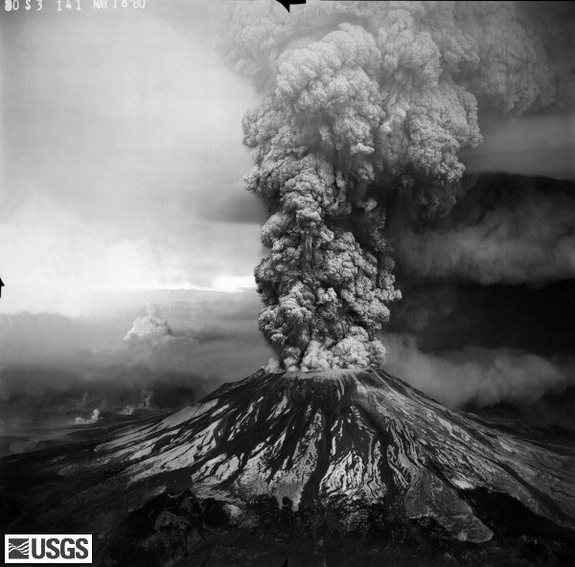Volcano Forecast? Crystals Could Predict Eruptions

The 1980 eruption of Mount Saint Helens may have been signaled by crystals moving in the magma beneath the Washington state volcano, years before it blew its top, scientists have found.
Mount St. Helens' eruption on May 18, 1980, was one of the most destructive volcanic eruptions in U.S. history. With an eruption column — the cloud of volcanic ash emitted during an explosive eruption — that measured 80,000 feet (24 kilometers) and that deposited ash in 11 states, the eruption caused damages estimated to cost $1.1 billion, according to the International Trade Commission. The eruption killed more than 57 people and destroyed more than 200 homes, according to the U.S. Geological Survey (USGS).
The new findings could help predict when the volcano will blow again and could be applied to other volcanoes, the researchers said, adding that their method will work on only some volcanoes. [The 11 Biggest Volcanic Eruptions in History]
Reading crystals
For the new research, Jon Blundy, a professor of earth sciences at the University of Bristol in the United Kingdom, and his colleagues analyzed crystals that formed in the magma under Mount St. Helens. This magma shot from the volcano as lava in 1980. As magma rises toward the surface, some of it solidifies into crystals due to cooling and a process called decompression in which lowered pressure causes water to separate from the solids.
The crystals in erupted volcanic rocks have concentric layers, like rings of a tree, Blundy said. Each layer has a distinct chemical composition reflective of the conditions in which its crystals grew.
"In other words, they can show where they were formed and the pressure and temperature conditions at the time of formation," Blundy said in a statement. "If you can read the record preserved in the zoned crystals, you can learn where and when molten magma has moved under the volcano. Rapid upwards movement of magma at depths of several kilometers is a pretty good indication that something significant is happening."
The researchers found that in the three years preceding the 1980 eruption, significant movement of magma under Mount St. Helens carried crystals from 7.5 miles (12 km) below the volcano to a depth of around 2.5 miles (4 km).
Get the world’s most fascinating discoveries delivered straight to your inbox.
Predicting eruptions
In order to "read" magma crystals, researchers must have a lot of information about a volcano, which is surely the case for Mount St. Helens. Since its eruption, this mountain has become one of the most studied volcanoes in the world, Blundy said. Scientists know, from high-temperature experiments, how Mount St. Helens' crystal composition responds to changes in pressure and temperature.
This isn't as clear at other, less well-studied volcanoes, Blundy told Live Science.
The researchers said they hope to apply the monitoring of crystal records to other well-studied volcanoes, such as Uturuncu in Bolivia, Mount Pinatubo in the Philippines and Bezymianny in Russia. In addition, the scientists will look into how crystal monitoring could be applied to prediction models and potential warning systems.
The research was presented at the Goldschmidt Conference on geochemistry on June 30 in Yokohama, Japan, and has yet to be published in a scientific journal.
Original article on Live Science.



